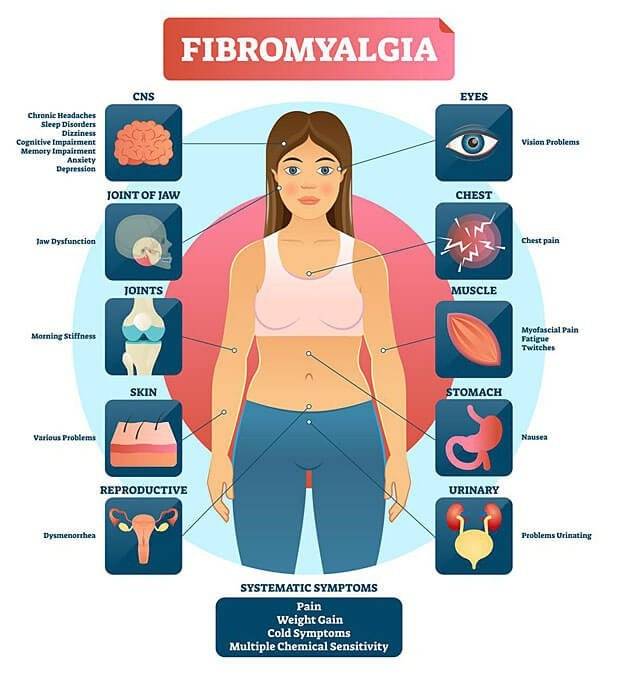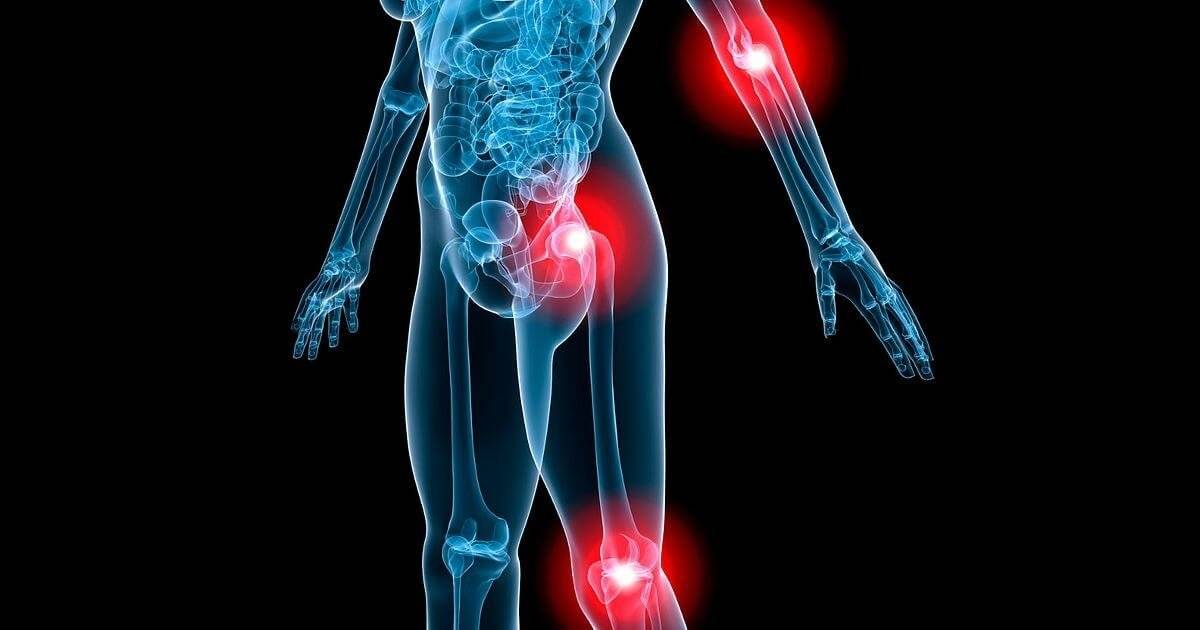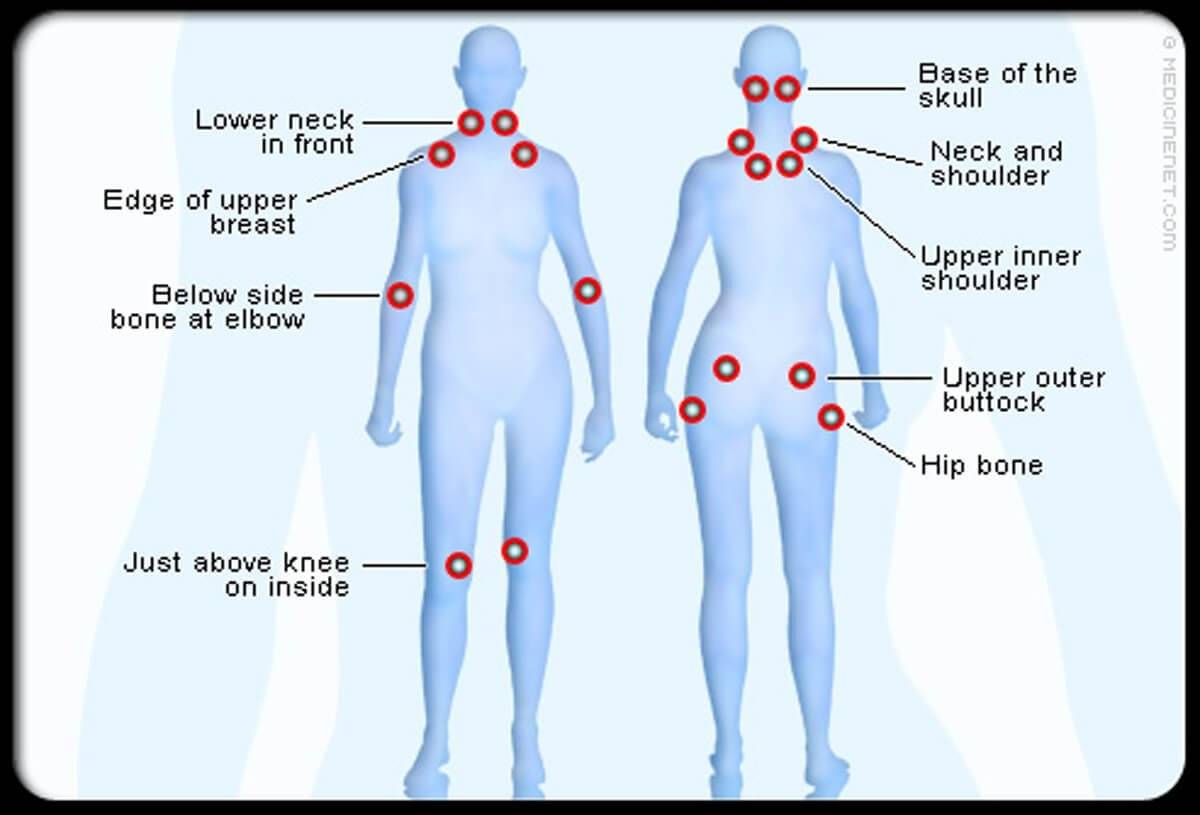Types Of Fibromyalgia Pain Introduction Series by Lotus Spring Acupuncture & Wellness Inc.
Fibromyalgia is classified as one of the most painful chronic illnesses to have. As a result, so many professionals, doctors, and physical therapists don’t actually know how to treat it correctly. Fibromyalgia is a chronic disorder that affects at least 5 million Americans, primarily women. It’s characterized by non-restorative sleep, muscle aches, and stiffness that may last all day for several days in a row.
Pain in the body and the presence of specific tender points, while types of fibromyalgia pain can vary in intensity. Sufferers often describe it as a deep, persistent ache or a stabbing or shooting muscular pain. Other common symptoms include incapacitating fatigue, insomnia, joint pain, leg cramps, headaches, and concentration/ memory problems known as Fibro fog. However, in this article, we’re not here to talk about the symptoms that you might already know and be experiencing. It’s time to get to the nitty-gritty and talk about the 8 main types of fibromyalgia pain
Several Types of Fibromyalgia pain is chronic pain caused by eight separate yet overlapping causes. The main factor that causes pain can change based on weather patterns, diet, psychological triggering, sleep, and mitochondrial levels.
Since there are eight overlapping causes and types of fibromyalgia pain, seeing them with clarity will allow you to adapt flexibly. It will help you know what to use to help alleviate pain, go to use it, and go to stop. In most cases, all of these mechanisms are at work to varying degrees, but one will play a central role, and alleviating it will allow the others to follow.
Number One: Immune hypersensitivity.
Imagine having the flu. The aches and pains follow a similar pattern due to the generalized immune response. Imagine the complete loss of energy, stiff neck, mental fogginess and lethargic. This is essentially what is happening with this cause of fibromyalgia. The pain itself comes when the immune system perceives a pathogen. It responds with increased inflammatory cytokines, nitric oxide, and homocysteine levels.
The increased nitric oxide around the areas of inflammation can cause muscle contraction similar to the way you might get a stiff neck when getting a common cold, limiting the LYMPHATIC drainage. This restriction can contribute to challenges with water retention and swelling. The key signs and symptoms of types of fibromyalgia pain that you may be experiencing can include; stiff neck and or frozen shoulder, swollen lymphatic tissue, chills, aches & tiredness.
Number Two: Gut Dysbiosis.
Think of a swamp. Now imagine that the swamp is heated to 98.6°F. This is the human body with water retention. Just as a hot swap they have swamp gas, mosquitoes, and plenty of fungi, the human body will likewise begin develop poisonous gases, pathogenic organisms and plenty of fungi. This is a water lodge body.
Just imagine a city trying to function under 2 feet of water. Life will go on, but at a very slow pace. This impedes healing and leads to systemic fungal infections. People experience pain that feels heavy; the skin and muscles feel soggy due to water retention, and is often accompanied with a mental fog. In severe cases it can cause edema. Overall, poor gut balance leads to systemic inflammation causing fatigue and pain symptoms.
Some of the key signs and types of fibromyalgia pain symptoms that you may be experiencing can include; irritable bowel disorder, loose stools, edema, water retention, fibromyalgia fog/foggy brain, symptoms worse in moist or hot weather, generalized headache, need to remind yourself to drink, fatigue, chronic fungal infections, or allergies and chronic sinusitis.

Number Three: Nitric Oxide Dysregulation Associated with Elevated Cortisol.
Think of a traffic jam. In some areas you have too many cars; in other areas, there aren’t enough. Now replace the vehicles with a gas that can either help restore homeostasis to the body or cause nerves to disintegrate, and you begin to understand the importance of them being distributed safely.
This explanation tends to manifest in many ways based on the fight or flight mechanism. For example, you either experience some types of fibromyalgia pain in the shoulders, which is the flight response. Where are you aren’t allowed to punch or claw, which is your natural response; so, as it’s built up and not used, it creates long-term tension that builds in the shoulders.
The other experience you could have is a pain in the lower back, which is the flight response. Energy surges to the legs, but you have nowhere to run.
The tension builds in the lower back. In addition, with increased oxidation, the liver loses efficiency in cannibalizing cortisol, so these stress hormones will build up in the body through the bloodstream, causing a repeat of Traumatic feelings.
Some of the critical signs and symptoms that you may be experiencing can include; pain which is improved by moving, often associated with an irritable bowel disorder, pain which is worse than with sitting and with stress and poor sleep, most common types of fibromyalgia pain causes, and accompanied with sleep deprivation and insomnia.
Number four: Prostaglandin Dysregulation & Platelet Adhesion Associated Chronic Inflammation and Pain.
Think of having a bruise that won’t go away; you might be experiencing of types of fibromyalgia pain. Remember the tenderness and the way it fatigues the local muscle. Now extend this bruise to the entire body and mix it with the pain of menstrual cramps or fibroids, and you begin to get an idea of how devastating this type of pain can be.
For this types of fibromyalgia severity, sophisticated blends of herbs are necessary to improve circulation and regulate prostaglandins.
The main parts in areas that we target with acupuncture and these herbal treatments would include reducing the synthesis of prostaglandins, alleviating the pain through herbs and acupuncture for long-term pain.
Also, acupuncture helps in regulating dopamine, wound healing, blood vessel formation, increasing vascular endothelial growth factor, increasing cellular immunity and significantly reducing elevated interleukin, and many more.
Number Five: Mitochondrial Myopathy.
Imagine being so tired that it hurts. The body is too weak to repair itself and regulate pain signals. This type of chronic pain is associated with fatigue, low levels of nitric oxide, and muscle weakness. The pain gets worse after movements and is worsened with fatigue. It is often accompanied by immunodeficiency and shortness of breath. Sound like fun? Well, it’s not.
Like many of these types of fibromyalgia pain symptoms and causes, this one, in particular, can be debilitating, causing life to be miserable. It might even feel like there is no relief even when you try and sleep.
Overall, we do have treatment strategies to help this type of fibromyalgia. We focus on boosting and regulating nitric oxide, regulating macrophage activity, increasing lung capacity, and boosting mitochondria.
Some of the critical signs and symptoms that you can be experienced for this types of fibromyalgia can include; burning, swelling, throbbing, cramping, aching, heaviness, restless leg, leg fatigue, muscle weakness, poor wound healing, and shortness of breath.

Number Six: Venous Insufficiency.
Picture this. Think of being drained of blood. It is being pale and cold. Imagine a dying animal having spasms as it bleeds out. Sorry for the dramatic and gory picture, but Venus’s insufficiency can cause a lot of the described feelings for the types of fibromyalgia pain you are experiencing at the moment.
It can even cause muscle twitching. Many of the signs and key symptoms that can go into the specific experience of this fibromyalgia can include; itching and tingling, pale complexion, fatigue, muscle spasms, twitching, or relentless leg syndrome.
Number Seven: Low DHEA’s or HPA-Thyroid Dysregulation.
Let’s look at the big picture. This pain is similar to that of people who go through chemotherapy. Take that, combine it with a loss of sex hormones, and add sleep deprivation and temperature fluctuations. That doesn’t sound pleasant, huh?
Many of us see and experience some types of fibromyalgia pain.
These pains are hyped from those who go through the debilitating event of cancer. However, cancer is an illness that strives to spread and eventually cease the body’s functions to perform correctly.
Not trying to compare the pain of severity levels of cancer and fibromyalgia but, this form of fibromyalgia doesn’t create an expiration date for the person. It stays with them throughout their whole life, whether it’s long-lived or not. The symptoms and critical signs that are the causes of fibromyalgia in this way include; lumbar pain, poor memory, hair loss, night sweats, pain that is worse when standing for long periods, waking in the middle of the night, estrogen deficiency, night sweats and pain that seems to come from inside the bones, and is often seen when fibromyalgia occur at menopause.
Number Eight: Dysregulation of ACTH & Cortisol Associated with Lumbar Pain and Low Body Temperature.
Imagine feeling old and cold. Imagine everything hurting and being afraid of cold weather. Imagine it hurting to stand up and having general aches and pains associated with aging. Now magnify that and bring that level at any age. This creates an understandable cycle of pain and depression for anyone at any time and at any age.
These types of fibromyalgia pain are usually associated with low libido or sexual dysfunction, nighttime urination, long-term depression, and fear response. The key signs and symptoms that are the causes of fibromyalgia in this way include; low libido or sexual dysfunction, nighttime urination, lumbar pain, low body temperature, long-term depression, and is more common in men around andropause.
 Overall, no matter what types of fibromyalgia pain symptoms you may have, we can help adjust all of these through our Chinese therapeutic methods in daily life. This can especially include changes in the external environment, harmonized breathing techniques, relaxation, and primarily herbal and acupuncture treatments.
Overall, no matter what types of fibromyalgia pain symptoms you may have, we can help adjust all of these through our Chinese therapeutic methods in daily life. This can especially include changes in the external environment, harmonized breathing techniques, relaxation, and primarily herbal and acupuncture treatments.
Typically, you can become pain-free within at least three months, and the underlying route is taken care of in nine. Dan Clark is one of the most advanced acupuncturists in the state of Utah. His patients travel from all over the United States to come to our clinic. His personalized care makes a huge difference in anyone who sees him. With Dan Clark, you see results.
There are three stages to the treatment process. One is to stop nerve damage by addressing the root cause, two is to repair the injured nerves, and three is to strengthen the body to prevent future flare-ups. By alleviating fibromyalgia symptoms in the long run, it is possible, but it has been successfully documented for millennia and tested scientifically for the past 50 years. You can have a brighter future and a pain-free life.
Make sure to look out for our next article, which will carefully go over the perspectives of the 10 Commandments of fibromyalgia.
 If you’re looking to receive effective treatment for ANY health condition, we recommend you start looking for a TCM practitioner in your area. If you’re within the state of Utah, don’t hesitate to reach out to Lotus Spring Acupuncture & Wellnessto receive the best holistic healthcare and acupuncture treatments.
If you’re looking to receive effective treatment for ANY health condition, we recommend you start looking for a TCM practitioner in your area. If you’re within the state of Utah, don’t hesitate to reach out to Lotus Spring Acupuncture & Wellnessto receive the best holistic healthcare and acupuncture treatments.
Dan Clark has years of highly specialized training and experience in the field of acupuncture in Utah. With being in business for over 15+ years, we’re the ones who can give you personalized treatment to help you attain your personal health goals.
